 |
 |
 |
| |
Testing for hepatitis C virus infection in prisons in England: room for improvement.
Only One Quarter Entering 3 Prisons in England Tested for HCV
|
| |
| |
EASL Congress 2024, June 5-8, 2004, Milan
Mark Mascolini
Only 25% of people entering 3 short-stay prisons in England got tested for HCV infection, according to results of a 6844-person study [1]. This bleak quotient raises concern about whether the UK can reach a target of testing 75% of people within 2 weeks of entering prison. HCV testing rates reached 96% in another study of a unique prison population in England [2] but proved similar to the 3-prison rate in a third UK study [3]. Analysis of surveys and interviews with prison officials and incarcerated people guided Kathryn Jack and University of Nottingham colleagues in exploring reasons for failure of HCV screening uptake in their study and ways to improve testing rates [1].
The previously reported high HCV testing rate came in a study of 13 facilities in England in which 8139 of 8487 people (96%) got tested for HCV within 5 days of entering prison [2]. The test prisons were trying a pilot HCV-intensive test-and-treat strategy from January 2020 to September 2021. Researchers picked these 13 facilities because they reported prior high levels of blood-borne virus testing, good access to peers in The Hepatitis C Trust, and availability of staff to begin HCV therapy quickly in people positive for the virus. Thus this population had marked advantages over the 3 prisons analyzed in the EASL 2024 study [1]. A 2018-2019 analysis of people going to prison in England found that only 32% got tested for HCV when entering prison [3]-a result similar to the HCV testing rate of the new study [1]. But throughout England, Jack reported that 71% of people got HCV screening within 2 weeks of arrival in 2022.
In the United States estimates of HCV prevalence range from 3% to 35% in incarcerated people, and most of these people do not know their HCV status [4]. Yet only 35% of prisons perform routine opt-out screening for all prisoners [4].
University of Nottingham researchers noted that a critical piece of the plan to eliminate HCV infection in England involves screening all people entering prison for HCV and treating actively infected people promptly [1]. Their study focused on people entering prison in the Midlands while awaiting trial and people with short prison sentences in 2022-2023. The investigators defined failure to be tested as no recorded test within 4 weeks of arrival. Among people not tested, 166 (3%) answered a questionnaire about HCV testing. The Nottingham team also surveyed healthcare heads at all 30 short-stay prisons in England about 8 HCV testing strategies; 12 prisons returned surveys. Semistructured interviews with 13 healthcare staff at the 3 study prisons focused on 39 implementation constructs of the Consolidated Framework for Implementation Research.
During the 52-week study period, 594 of 3456 people (17.2%) entering prison 1, 590 of 2081 (28.3%) entering prison 2, and 558 of 1307 (42.5%) entering prison 3 had an HCV test for an overall rate of 25.5%. HCV screening rates in these 3 prisons did not correlate with number of interventions deployed to encourage testing. People entering prison from the community had a higher testing rate than those transferred from another prison (39% vs 31%), as did those expected to stay in prison more than 21 days (39% vs 27%).
Two thirds of the 166 untested interviewed people gave their primary reason for lack of HCV testing as "I am not interested." Specifically, they had grown weary of repeated clinical testing, often over the course of more than 1 incarceration.
Healthcare staff interviews disclosed 21 barriers to HCV testing and 9 facilitators of testing. Prime barriers to HCV testing included education focus on test method (dried blood spots rather than how to deliver opt-out testing, lack of time and space during admission to prison, competing healthcare and prison priorities, and lack of support for external HCV peers. Central facilitators of HCV testing included offering incarcerated people incentives to get tested, arranging meetings between nurses at different prisons, creating links between prison nurses and hospital HCV nurses, and providing feedback on progress. Incentives could be as simple as origami paper.
The Nottingham researchers suggested low HCV testing uptake is prison in England could be improved by removing identified barriers to testing and adopting identified facilitators. Scrutinizing survey and interview results, they proposed a new framework for HCV screening in prisons and called it CHIME: C = capacity building (capital building, nurses, prison officers); H = hold to account (explain actions, justify, measure, lead); I = incentivize (reward positive actions, inclusive, value staff); M = modernize (adapt custody and care regimes, innovate); E = educate (define opt-out testing, connect with other prisons).
References
1. Jack K, Thomson B, Irving W, et al. EASL Congress 2024, June 5-8, 2004, Milan. Abstract OS-004.
2. Halford R, Christensen L, Cox S, et al. Chronic hepatitis C elimination prison initiative: HCV-intensive test and treat, a whole prisoner population HCV test-and-treat program in England. Health Sci Rep. 2023;6(12):e1724. doi: 10.1002/hsr2.1724. https://www.ncbi.nlm.nih.gov/pmc/articles/PMC10730947/
3. Public Health England. Hepatitis C in England 2020: working to eliminate hepatitis C as a major public health threat. 2020.
https://webarchive.nationalarchives.gov.uk/ukgwa/20211226125116mp_/https://assets.publishing.service.gov.uk/government/uploads/system/uploads/attachment_data/file/898221/HCV_in_England_2020_report.pdf
4. Beckman AL, Bilinski A, Boyko R, et al. New hepatitis C drugs are very costly and unavailable to many state prisoners. Health Aff. 2016;35:1893-1901. https://www.healthaffairs.org/doi/10.1377/hlthaff.2016.0296
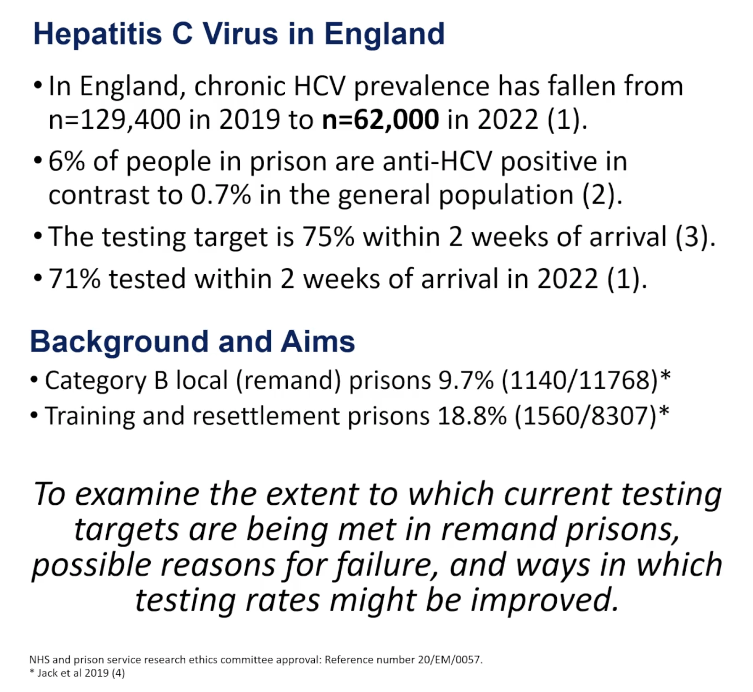

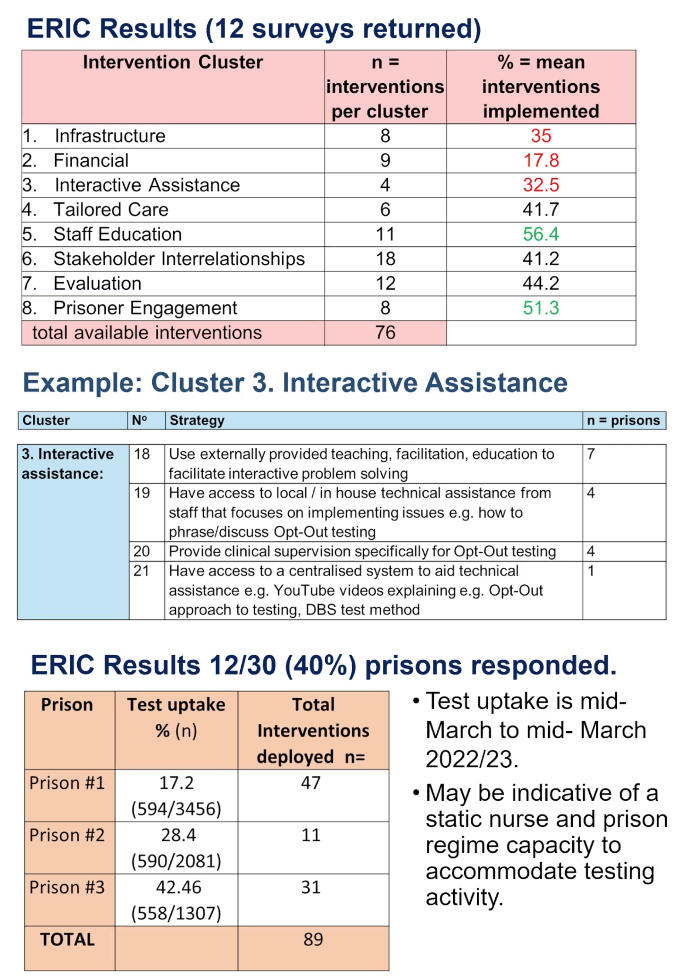
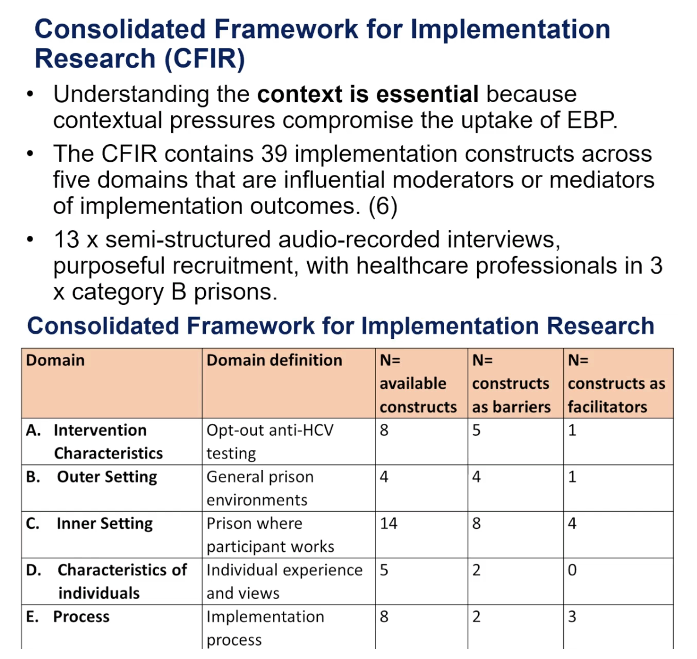
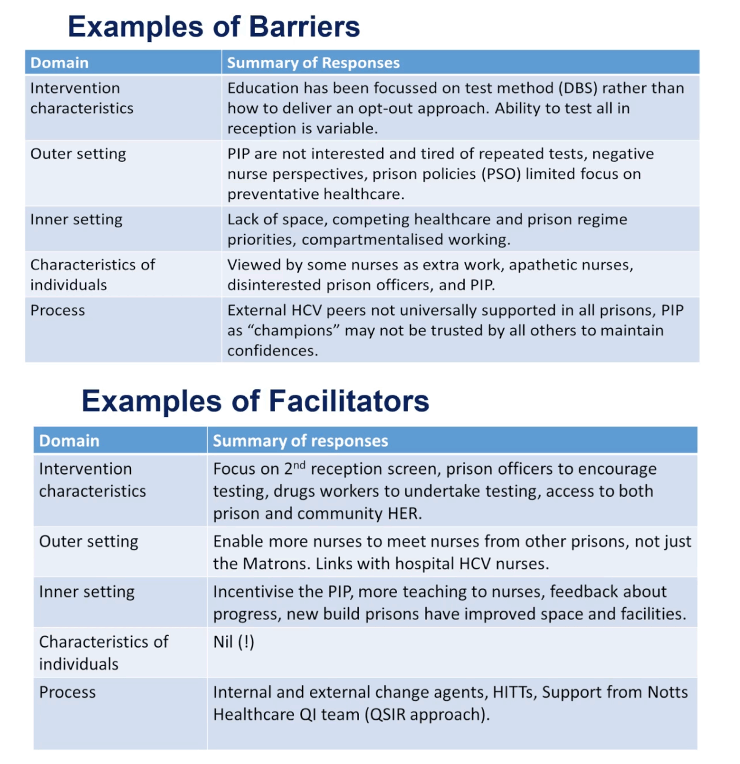
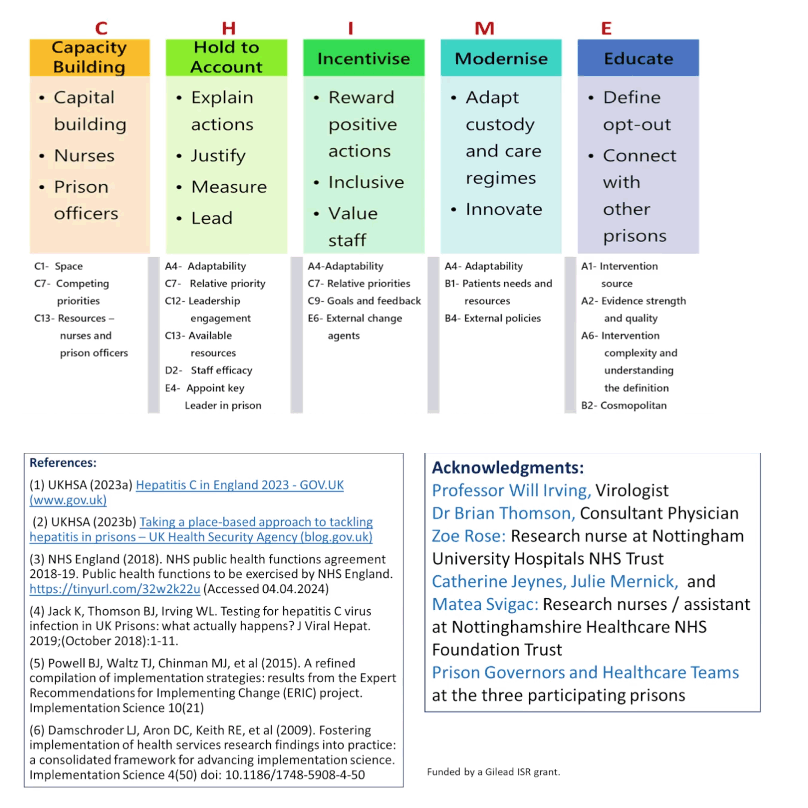
|
| |
|
 |
 |
|
|